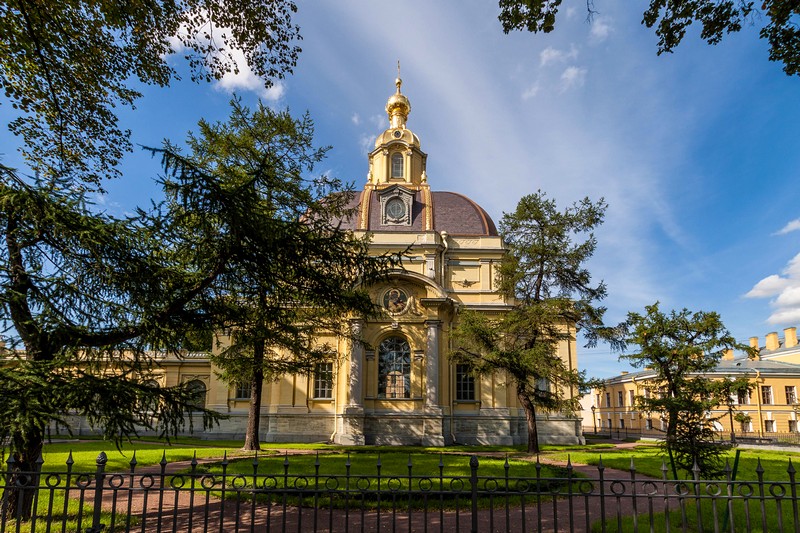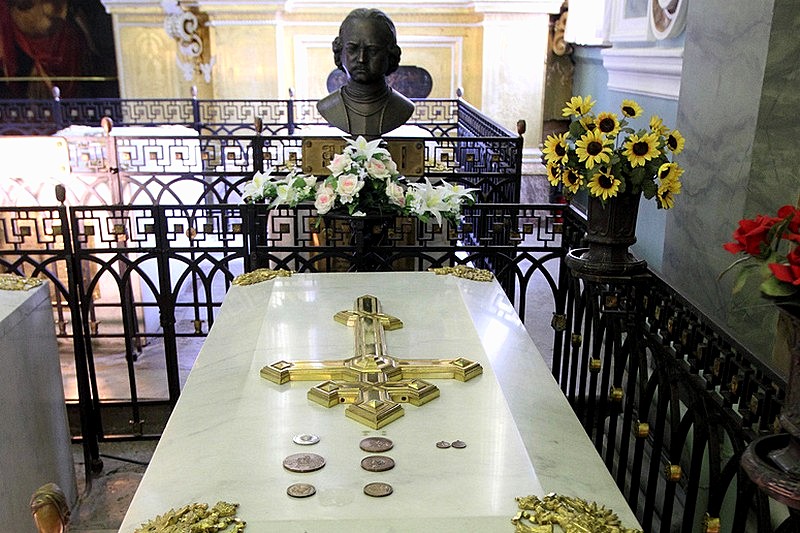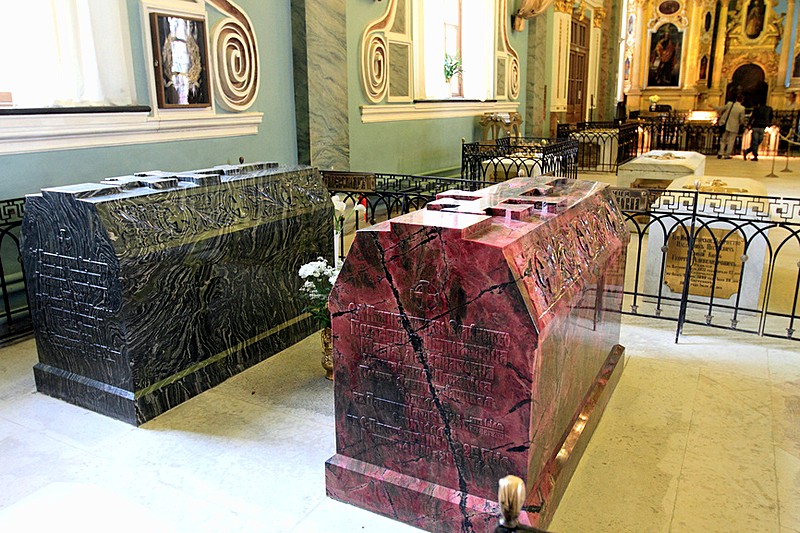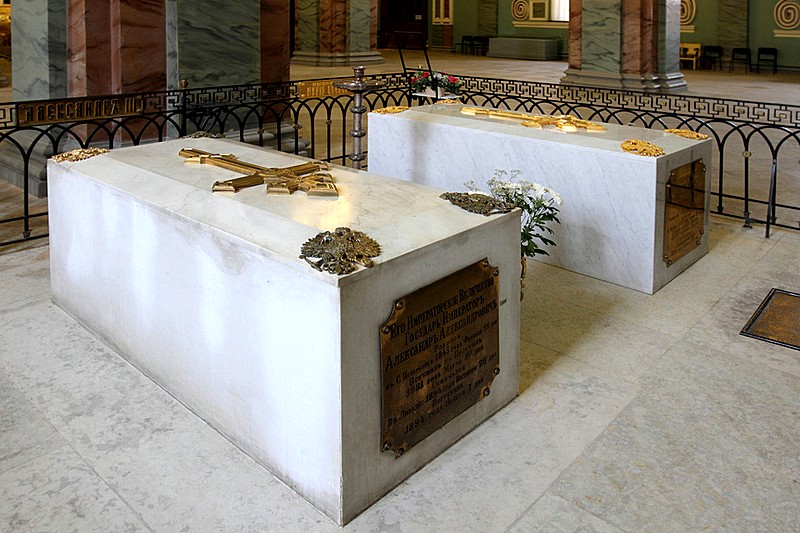Tombs of the Peter and Paul Fortress
Nearly every visitor to St. Petersburg will find their way to the Peter and Paul Fortress, and standing at its centre is the Ss. Peter and Paul Cathedral, which houses the tombs of all Imperial Russia's rulers, including Peter the Great, Catherine the Great, and the last Russian monarch Nicholas II. The Grand Ducal Mausoleum, next to the cathedral, was built in 1896 to hold the tombs of the lesser Romanovs, as well as the Beauharnais family (Dukes of Leuchtenberg), who had married into the Romanov family.

After the founding of St. Petersburg as the new capital of Russia, the tombs of the first members of Peter the Great's family were placed in the Church of the Annunciation at the Alexander Nevsky Monastery. But already in 1715, Natalia Petrovna, the two-year-old daughter of Peter and Catherine, was buried in the unfinished Ss. Peter and Paul Cathedral and soon after Princess Charlotte Sophia Christina of Brunswick-Wolfenbuttel, the wife of Tsarevich Aleksey Petrovich, was also buried here beneath the bell tower. Aleksey Petrovich, who died while imprisoned in the fortress, was also laid to rest here in 1718.

After the death of Peter the Great in 1725 his coffin was first placed in the Alexander Nevsky Monastery, and then moved to the Peter and Paul Cathedral and buried on May 29, 1731. From then on all Russian emperors and empresses up to and including Alexander III were buried here, except for Tsar Peter II (buried in the Moscow Kremlin in 1730) and the murdered Ivan VI (buried in Shlisselburg Fortress in 1764). A total of 41 tombs are located here, including a number of grand dukes and duchesses - the children and grandchildren of the emperors. In 1865, all the headstones were replaced with the same type of white marble sarcophagi with gilded bronze crosses. Imperial tombs are decorated with double-headed eagles. Only two of the sarcophagi differ from the others. They were manufactured at the Peterhof Lapidary Works from semi-precious stones: a gray-green Altai jasper tomb for Alexander II and a pink Ural rhodonite tomb for his wife Maria Alexandrovna.

As the Peter and Paul Cathedral gradually filled with tombs, it was decided to build a separate shrine to bury the Grand Dukes and Duchesses of the Russian Imperial House. The Grand Ducal Mausoleum was designed by architect David Grimm and constructed 1897-1908. The Mausoleum was built to hold 60 tombs, but by 1916 there were only 13 people buried, and eight of them had been moved from the cathedral.
After the October Revolution, the fates of the cathedral and the mausoleum were very different. The Ss. Peter and Paul Cathedral was immediately recognized as a monument of architecture and preserved. The Grand Ducal Mausoleum, however, was looted and its marble tombstones were smashed. For many years the mausoleum was used as a warehouse. Only in the 1980s did it undergo large-scale restoration. After the collapse of the Soviet Union, the restored mausoleum was used in 1992 to bury the body of the great-grandson of Emperor Alexander II, Grand Duke Vladimir Romanov, and then in 2010 his wife Leonida.

A significant event took place in the cathedral on July 17, 1998. On this day the remains of Emperor Nicholas II, Empress Alexandra Fyodorovna, Grand Duchesses Tatiana, Olga and Anastasia, who were executed in Yekaterinburg in 1918, were interred in the St. Peter and Paul Cathedral. And in 2006, the Ss. Peter and Paul Cathedral also welcomed the remains of Empress Maria Feodorovna, wife of Alexander III and the mother of Nicholas II. She died in 1928 and was buried her homeland of Denmark, but expressed in her will that she wished to be buried next to her husband. So the imperial Romanov dynasty was reunited posthumously. Today, all the graves of Peter and Paul Fortress are exhibits of the Museum of the History of St. Petersburg.
| Address: | 1, Sobornaya Ploschad |
|---|---|
| Metro stations: | Gorkovskaya |
| Directions: | Exit Gorkovskaya Metro Station and walk straight south through Alexandrovsky Park to Kronverkskaya Embankment. From there, the Ioannovsky Bridge leads to the fortress |
| Opening hours: | Cathedral: Monday to Friday from 10am to 7pm |
| What's nearby? | Peter and Paul Fortress, Alexandrovsky Park, Kronverkskaya Embankment, Zoo |

